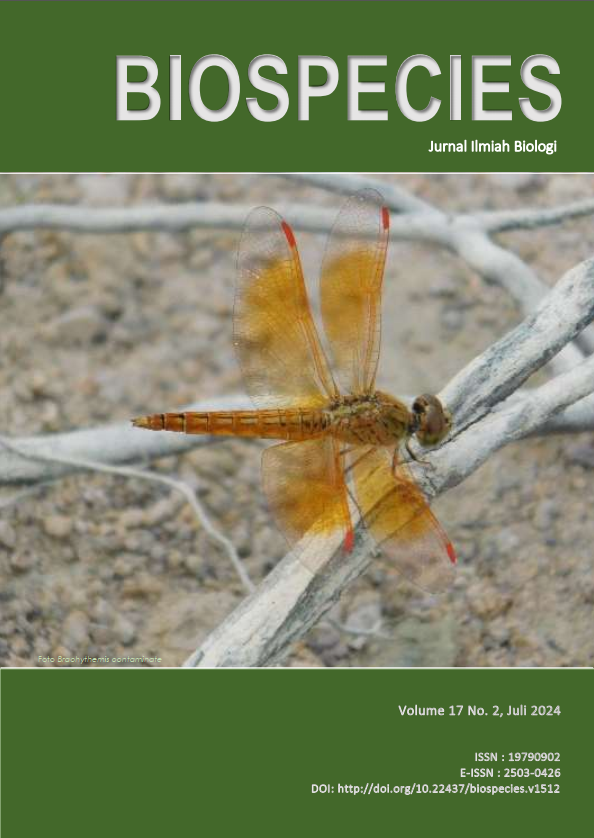Flora Diversity as An Attraction at Edu-Tourism Villa Tani Indonesia
DOI:
https://doi.org/10.22437/biospecies.v17i2.35658Keywords:
Edu-tourism, Flora diversity, Villa Tani IndonesiaAbstract
Based on genetics and response to the environment, a diversity of flora can grow in an area, including in Villa Tani Indonesia. Villa Tani Indonesia is one of the tourist attractions, located in the Cilegon-Banten, which offers educational tourism based on agro-farming and animal husbandry. The plants cultivated at Villa Tani Indonesia utilized for educational tourism and post-harvest economy, thus some are annual plants but there are also annual plants that can be harvested in one growing season. The observation method was used to identify and to inventory the diversity of flora at Villa Tani Indonesia, which is used as an edu-tourism attraction. Based on the research showed that there was a diversity of flora of 27 species consisting of 16 families, namely Vitaceae, Cucurbitaceae, Rutaceae, Myrtaceae, Solanaceae, Fabaceae, Oxalidaceae, Malvaceae, Poaceae, Sapotaceae, Caricaceae, Rosaceae, Convolvulaceae, Amaranthaceae, Brassicaceae, and Gnetaceae. The highest number of individu was found in Zea mays, Ipomoea reptans, Ipomoea aquatic, Amaranthus tricolor, and Brasicca rapa.







